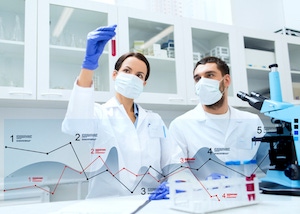The bold new world of self-healing technology includes car tires that repair themselves and adapt to road conditions in real time and concrete that reflexively fills in cracks.
November 29, 2017

 Self-healing materials have the potential to eliminate a vast number of problems, large and small, in a swathe of industries. The technology can smooth over dings on your car door without a visit to the body shop or self-repair cracks in oil-well casings. A surprising number of applications are on the threshold of commercialization. Business consultancy Frost & Sullivan (San Antonio, TX) hosted a webinar yesterday that identified some of the applications and opportunities for self-healing materials. Here are five key takeaways from the presentation by Industry Analyst Isaac Premsingh and Senior Research Analyst Khadijah Afia Allapitchai.
Self-healing materials have the potential to eliminate a vast number of problems, large and small, in a swathe of industries. The technology can smooth over dings on your car door without a visit to the body shop or self-repair cracks in oil-well casings. A surprising number of applications are on the threshold of commercialization. Business consultancy Frost & Sullivan (San Antonio, TX) hosted a webinar yesterday that identified some of the applications and opportunities for self-healing materials. Here are five key takeaways from the presentation by Industry Analyst Isaac Premsingh and Senior Research Analyst Khadijah Afia Allapitchai.
There are three types of self-healing mechanisms: Encapsulated healing agents embedded in the material matrix, an interconnected vascular network that delivers the healing agents, and materials with intrinsic healing properties that are triggered by external stimuli. The optimal method depends on the final application, but repeatability and performance issues associated with capsule-based polymer composites, which are limited to a single healing cycle, have caused researchers to increasingly look at vascular network structures, according to Premsingh. Epoxy coatings with a vascular architecture, for example, can recover at least 50% of their fracture toughness even after 30 healing cycles.
Currently, the most promising applications for self-healing materials are in the automotive/aerospace, building and construction, and oil and gas sectors, and the top material choices are polymer composites, paints and coatings, and cement and concrete, according to Premsingh and Allapitchai. Mobility applications are limited to high-end automobiles and include tires fabricated with self-healing elastomers and polyurethane-based anti-scratch coatings for car bodies. The technology drivers for applications in all sectors are robustness, functional restoration (meaning that the base properties of the material are not diminished following the healing cycle), long-term reliability, ease of adoption and cost benefit to the end user.
Adoption in the consumer electronics and wearables space will depend on users’ willingness to pay a premium, said Premsingh. That point is moot for the time being, as self-healing batteries and devices remain in the lab and won’t find wide-scale commercialization for another five years. More immediate applications in the oil and gas and marine sectors have the potential to make self-healing technology a must have rather than a nice to have, added Premsingh. Maintenance cycles and total cost of ownership have huge implications in these industries. In the marine sector, for example, enhanced corrosion resistance and a reduction in maintenance cycles are a tremendous value add.

The Goodyear Eagle 360 concept tire has a self-healing, super-elastic polymer skin.
In a roundup of emerging players and products, Premsingh and Allapitchai highlighted Goodyear’s 3D-printed Eagle 360 concept tire with a self-healing, super-elastic polymer skin. Designed in a spherical shape, the revolutionary tire is equipped with sensors and artificial intelligence that allow it to adapt to varying road conditions in real time. Premsingh and Allapitchai also called out the collaboration between Lamborghini and Massachusetts Institute of Technology on the Terzo Millennio electric concept car with self-healing capabilities. Reporting on this project recently in PlasticsToday, Stephen Moore wrote: “The concept car has the ability to conduct its own health monitoring to detect cracks and damages in its substructure derived from accidents. A self-repairing process starts via micro-channels filled with healing chemistries, reducing to zero the risks of small cracks propagating further in the carbon-fiber structure.”
Researchers at the Delft University of Technology in the Netherlands have developed self-healing “bio” concrete. The concrete is mixed with bacteria and calcium lactate, which can remain dormant for up to 200 years. When cracks form in the bio-concrete and water starts to seep through, the bacteria are activated. They consume the calcium lactate and start to produce limestone, a bacterial byproduct, that fills the cracks. Now in the demonstration phase, the technology is destined to have a high technological and commercial impact, said Premsingh and Allapitchai.
About the Author(s)
You May Also Like




